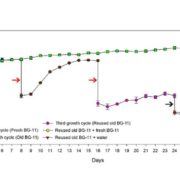
What Limits the Growth of Cyanobacteria?
Blog, Plant Physiology, Plant Physiology: On The Inside, Research, Research Blog0 Comments
/
The commercialization of cyanobacteria-based biomass and biomolecules requires optimization for sustainable economic viability. Many studies identified growth-limiting factors in the model cyanobacterium Synechocystis (e.g. nutrients and light). Understanding the factors controlling the limitation…

A Key Enzyme in the Biosynthesis of a Plant-Derived anti-HIV Drug
Plant Physiology, Plant Physiology: On The Inside, Research, Research BlogRhododendron dauricum (Ericaceae), a native of northeastern Asia, produces unique secondary metabolites including daurichromenic acid (DCA). DCA has attracted considerable attention as a medicinal resource because this compound is one of the most effective natural products with anti-HIV properties in…
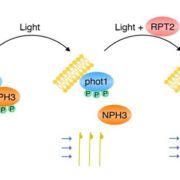
Update: Shining light on the function of NPH3/RPT2-like proteins in phototropin signalling
Plant Physiology, Plant Physiology: Updates, Plant Science Research Weekly, ResearchBlue light regulates diverse functions including phototropism and chloroplast movements. Christie et al. summarize recent updates in understanding the signalling pathway between light perception by phototropins and downstream responses. They describe the central roles for the 33 members (in Arabidopsis)…
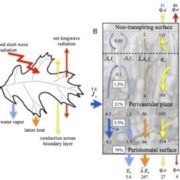
Update: Leaf hydraulic architecture and stomatal conductance: a functional perspective
Plant Physiology: Updates, Research, Research BlogBy Fulton E. Rockwell, and N. Michele Holbrook
The structure of leaf vasculature viewed over a broad phylogenetic scale from lycophytes to eudicots correlates with stomatal conductance (gs), providing the basis for the hypothesis that increasing vein density drove the evolution of high fluxes in angiosperms.…
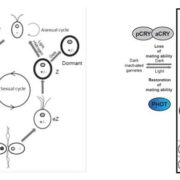
The Role of an Animal-Like Cryptochrome in a Green Alga
Plant Physiology, Plant Physiology: On The Inside, Research, Research BlogLight is an essential environmental factor for photosynthetic organisms, serving as a source of energy and signal information. To precisely perceive and respond to different wavelengths of the light spectrum, eukaryotic photosynthetic microorganisms and higher plants have developed different classes…
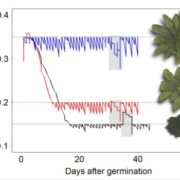
Phenotyping Water Deficit Acclimation Responses
Plant Physiology, Plant Physiology: On The Inside, Research, Research BlogWater deficit (WD) is one of the main environmental stress factors affecting crops and global food security. Acclimation to WD, however, enables plants to maintain growth under unfavorable environmental conditions. To shed light on the molecular mechanisms underlying WD acclimation, Rymaszewski et al.…

Auxin Regulates Growth of a Characean Alga
Plant Physiology, Plant Physiology: On The Inside, Research, Research BlogAuxin regulates many aspects of growth and development in land plants, but the origin and evolution of auxin signaling and response mechanisms remain largely unknown. Genome analyses of the moss Physcomitrella patens revealed the presence of the principal gene families involved in auxin homeostasis and…
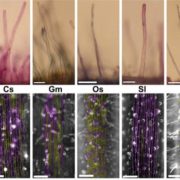
Is All Root Hair Development the Same?
Plant Physiology, Plant Physiology: On The Inside, Research, Research BlogRoot hairs are long tubular extensions of root epidermal cells that greatly increase the root surface area and thereby assist in water and nutrient absorption. Root hairs are found in nearly all vascular plants, including angiosperms, gymnosperms, and lycophytes, and they exhibit similar cellular features,…
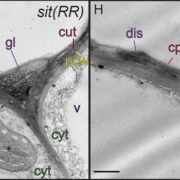
ABA is Required for Cuticle Formation Independent of Water Stress
Blog, Plant Physiology, Plant Physiology: On The Inside, ResearchThe waxy cuticle, a key barrier to desiccation and pathogen entry, is a dynamic structure, the composition, area, permeability and thickness of which can change in response to environmental conditions. For example, water deficit in Arabidopsis (Arabidopsis thaliana) triggers an increase in the accumulation…

